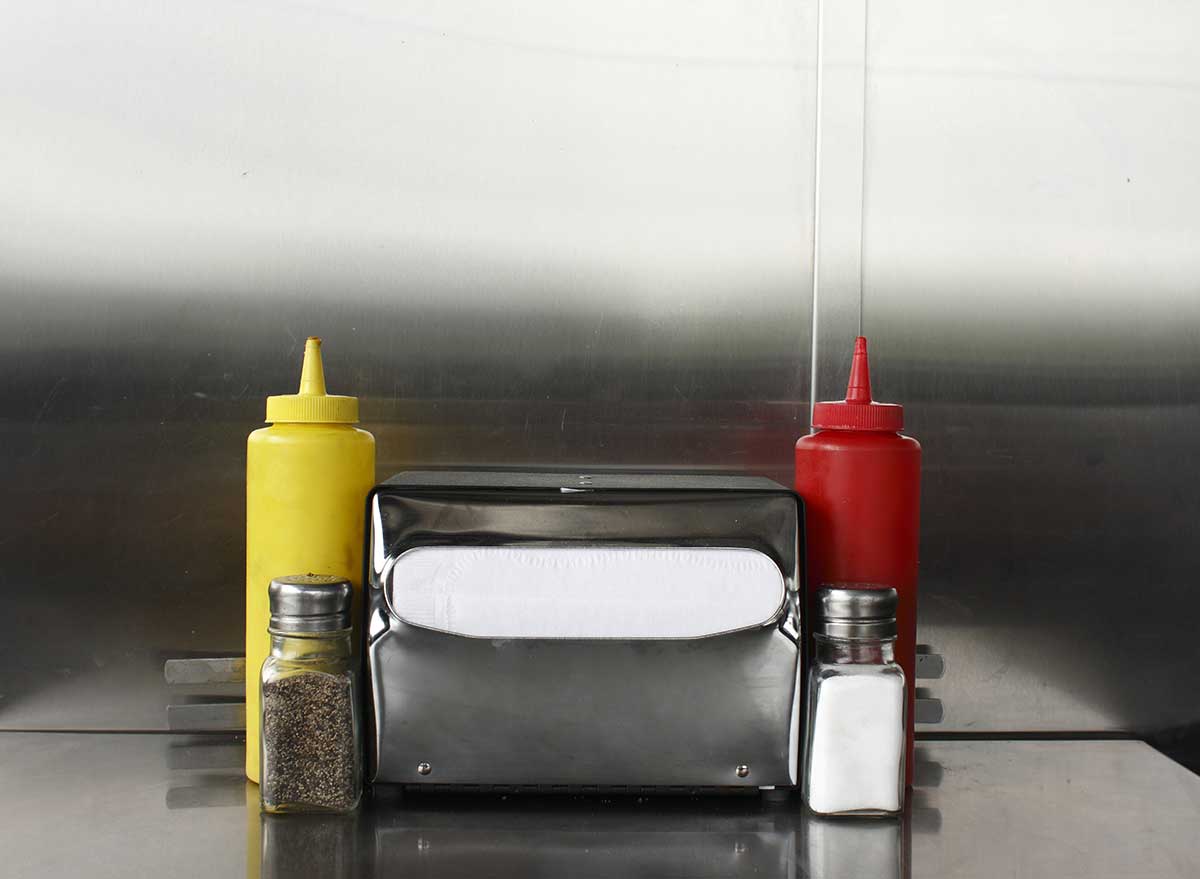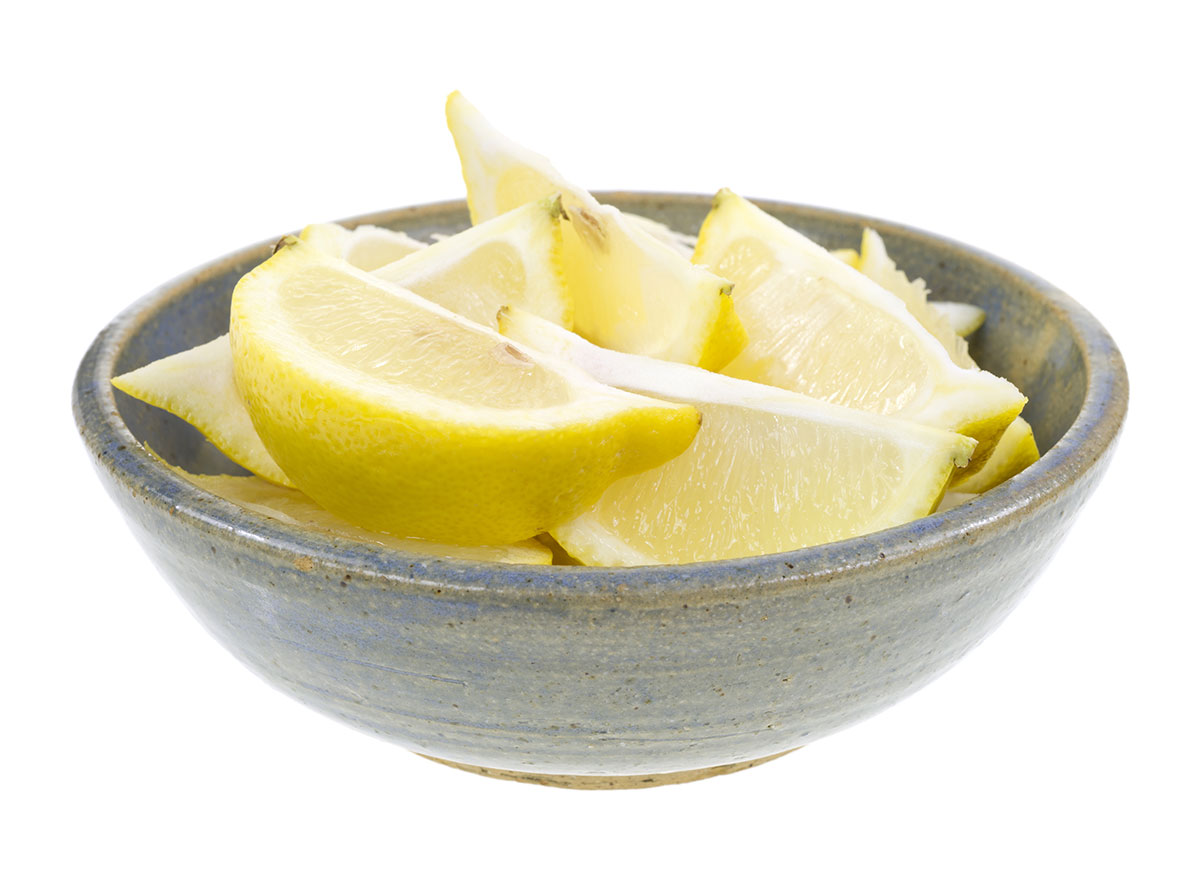The 7 Germiest Spots in Restaurants to Avoid

Now that restaurants are beginning to open up again, most people are eager to get back to dining out as often as they used to. Things will be different, as restaurants will be following social distancing rules, and customers are going to feel compelled to do all they can to not spread as many germs. Everyone wants to stay safe, right? Well, there are some spots that you might not even realize in restaurants that are covered with germs.
Yikes.
So to help you stay in the know, we're here to give you some insight. Here's a breakdown of the germiest spots and things in restaurants you'll want to pay extra attention to.
Menus

We know—you kind of have to touch the menus to figure out what you're going to eat. But think about it—menus go through many hands every day between the servers who bring them to customers and those who are sifting through the pages looking at their options. Unfortunately, plastic menus aren't always cleaned the way they should be and studies have shown that menus can actually have a bacteria count as high as 185,000 per square centimeter, which is more than a toilet seat, with E. coli and Staphylococcus aureus being present on menus. Scary stuff!
Condiment Dispensers

Whether you're reaching for the salt and pepper or some ketchup and mustard, these items get touched a lot and are typically always present on restaurant tables. Although tabletops get wiped down between meals, the same can't be said for these items. And that study that found the germs festering on menus also uncovered that a pepper shaker had the second-highest average bacteria count with 11,600 organisms.
Buffets

Buffets are easy and often have plenty of your favorite foods. But again, it's a high-traffic zone and germs spread at a rapid pace. So many people touch each serving spoon and it's highly unlikely that every person is sanitizing their hands after they touch each spoon!
High Chairs

If your little ones are joining you for dinner, you want to make sure they're staying as safe as possible, too. But those high chairs they sit in are not the cleanest, as many of the bacteria found could easily be removed with a simple cleaning. And it's no secret that smaller children are notorious for putting their fingers in their mouths, a surefire way to spread germs. So be sure you're wiping these down before letting your child sit in one.
Ice Machines

So those ice machines that create the ice that's in your drinks? Well, sorry to break it to you, but they're often not cleaned as regularly as they should be. This means that there might be bacteria floating around in your drinks from the ice cubes. Gross!
Bathroom Hand Dryers

It shouldn't come as a big surprise that public restrooms have many germs, but the one truly germ-infested item in the bathroom is the hand dryers. What makes them so dangerous? Well, the dryers are blowing air and therefore, are spreading bacteria and germs from people's hands that can be transmitted through the air.
Lemons

It's not just the ice that's scary, but the lemons are just as bad. Yes, those lemon wedges you add to your water or iced tea? One study uncovered that there can be up to 25 different types of germs on them including fecal matter and E. coli. This might be a result of the lemons not being properly cleaned before they're given to diners, as well as employees not washing their hands as often.
Living in the midst of a pandemic though, everyone is now aware of the power hand-washing actually has, so you should be eating in much safer environments.








